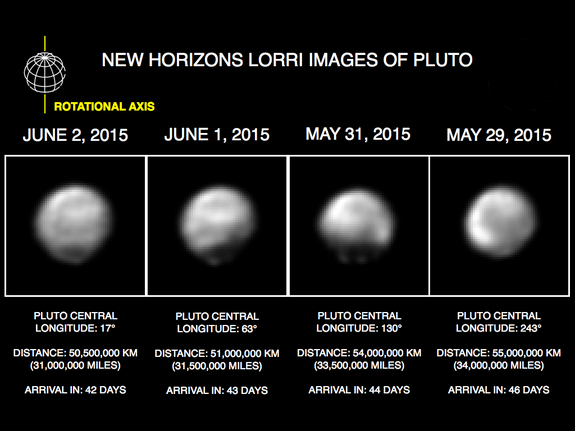The first spacecraft sent to study Pluto is just less than a month away from the dwarf planet.
After travelling nine long years to explore Pluto, NASA’s New Horizon spacecraft is just 20 million miles away from its epic encounter with the dwarf planet.
NASA has already revealed images of the four “faces” of Pluto captured by the spacecraft using the Long Range Reconnaissance Imager (LORRI). Dimensions and details of the dwarf planet’s dark surfaces were uncovered through the images taken as the lonely cosmic body rotates.

New Horizons’ deputy project scientist Cathy Olkin said: “We’ve always known Pluto had dark areas, but now, we’re starting to see how large they are, where they’re exactly located, what shape they take — and it’s very fascinating to see this level of detail.”
To examine Pluto’s surface geology and temperature, New Horizons is set to capture infrared photos of Pluto and Charon, its largest moon, this week. Moreover, the spacecraft will continue taking measurements using the LORRI as well as capture daily colour images indicating Pluto’s full rotational phase.
Currently, New Horizon is closer to Pluto than the Earth is to Venus, our closest planet in the solar system. The spacecraft, which was launched in Cape Canaveral, Florida in 2006 will be flying within 12,000 kilometers of Pluto. A distance similar to the distance between Sydney and Seattle.
The epic close encounter is expected to happen on July 14 ad the US National Space Society has commissioned a teaser video to mark the occasion.
According to New Horizons mission systems engineer Chris Hersman, the mission may possibly continue its journey up to the outer edge of the solar system if the probe’s power supply remains healthy.





